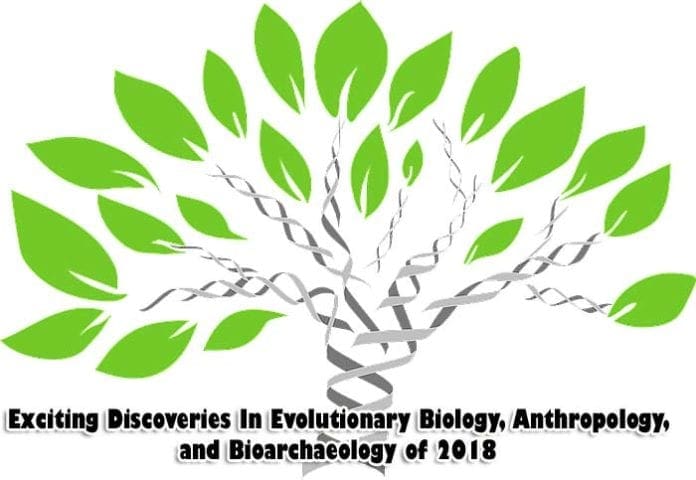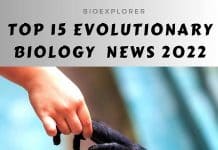Homo neanderthalensis , a group of hominins widespread in Europe before the Homo sapiens invasion, differ significantly from the newcomers in term of cognitive and creative abilities. It is now established that H. neanderthalensis were able to create art-like objects, though they were of a different type compared to the ones known for sapiens .
Reference :
“A Tale of Two Species: The Origins of Art and the Neanderthal Challenge” – Eveline Seghers, Evolutionary Studies in Imaginative Culture, Vol. 2, No. 2 (Fall 2018), pp. 83-102. Accessed March 20, 2019.
Link .
2. Neanderthals were versatile hunters H.sapiens – H.neanderthalensis .
It was discovered for the first time in the Northern Iberian Peninsula area that Neanderthals in this region were hunting various prey. While previously there were data of them hunting hoofed animals, it is now established that they hunted carnivores (such as lynx) and birds Remains of large ravens and other scavenger birds were also found, pointing to the fact that these birds probably accompanied the settlements in order to get food. Reference :
“First data of Neandertal bird and carnivore exploitation in the Cantabrian Region (Axlor; Barandiaran excavations; Dima, Biscay, Northern Iberian Peninsula) | Scientific Reports” . Accessed March 20, 2019.
Link .
3. Not with meat alone: ancient people ate fish, too! Mesolithic period eat? We usually imagine our ancestors being predominantly land hunters.
The isotopic analysis and bioarchaeology of the settlements of the Central Mediterranean region show the opposite for the first time. It was discovered that human residing in the region around 18,000 years ago were not exclusively meat – eaters. They also consumed a lot of fish and plant foods. It is a novel piece of evidence pointing out to the significantly more varied diet of our ancestors than was previously thought. Reference :
“Dental calculus and isotopes provide direct evidence of fish and plant consumption in Mesolithic Mediterranean | Scientific Reports” . Accessed March 20, 2019.
Link .
4. New firm evidence shows the time of the arrival of the Australia’s dingo
However, there were no firm estimates as to when this species, now iconic for Australia, has arrived on the continent. Estimates range from 18,000 to 4,000 years ago. The excavations at the Madura Cave, Australia have helped in pinpointing the arrival of dingoes better. The dingo bones found in the cave were approximately 3800 years old. It was also proposed that dingoes have radiated very rapidly throughout the continent upon arrival. Reference :
“New dates on dingo bones from Madura Cave provide oldest firm evidence for arrival of the species in Australia | Scientific Reports” . Accessed March 20, 2019.
Link .
5. Mitochondrial DNA can skew the accuracy of ancient DNA research mitochondrial
During such studies, the estimates of approximate foreign DNA contamination are always made. Newer techniques, such as next-generation sequencing (NGS) have shown that in male remains, the presence of mitochondrial DNA often influences estimates of DNA contamination, especially if the mDNA/nDNA ratio is high. Scientists recommend making such estimates preferably based on a female, not male remains if possible. Reference :
“Ratio of mitochondrial to nuclear DNA affects contamination estimates in ancient DNA analysis | Scientific Reports” . Accessed March 20, 2019.
Link .
6. New data about “Siberian unicorn ” uncovered Siberian unicorn ” has gone extinct around 200,000 years ago.
Recent analysis overthrows these estimates. It was shown that this rhinoceros has survived in the region until 39,000 years ago. The analysis shows that the animal also consumed a highly specialized diet, which probably contributed to its extinction.
Reference :
“Evolution and extinction of the giant rhinoceros Elasmotherium sibiricum sheds light on late Quaternary megafaunal extinctions | Nature ecology evolution . Accessed March 20, 2019.
Link .
7. Hominins have arrived at the Philippines much earlier than previously thought
The findings were dated between 777 and 666 thousand years ago. These findings show that the arrival of ancient hominins , including H.erectus , took place several hundred thousand years earlier than previously accepted. Reference :
“Earliest known hominin activity in the Philippines by 709 thousand years ago | Nature” . Accessed March 20, 2019.
Link .
8. Neanderthals could have been musicians!
There were multiple theories as to its function. In 2018, a group of researchers had conducted experiments with the find and had proven that this item might well have been a musical instrument in reality. What is even more exciting is the fact that the settlement in question was populated by Neanderthals at the time, not our own species. Reference :
“The Mousterian Musical Instrument from the Divje babe I cave (Slovenia): Arguments on the Material Evidence for Neanderthal Musical Behaviour – ScienceDirect” . Accessed March 20, 2019.
Link .
9. An Early Bronze Age skull with signs of interpersonal violence found
The skull had specific injuries that were evaluated with the help of some different methods. It was found that the trauma was caused by a man-made weapon, so the injuries were the result of a fight with someone who belonged to the same species. There is hope that the application of multiple methods of remains evaluation would bring more insights into the relationships between individuals in the Bronze Age, including violence. Reference :
“Violence in the Early Bronze Age. Diagnosis of skull lesions using anthropological, taphonomic and scanning electron microscopy techniques | SpringerLink” . Accessed March 20, 2019.
Link .
10. Ancient cheese found in an Egyptian tomb Proteomics analysis of the samples found at a tomb of Ptahmes , dating back to the XIX dynasty of Egypt, has led to an exciting discovery.
It was established that one of the samples analyzed was a product made from a mix of cow and goat (or sheep) milk. In other words, this was the most ancient known attempt to make cheese. The researchers also found Brucella melitensis specific peptides, pointing to the presence of this infection in the population at this time. This discovery confirms the usefulness of bioarchaeological methods in studying ancient food samples. Reference :
“” . Accessed March 20, 2019.
Link .
11. A sad story of young rhinoceroses told by teeth Prosantorhinus germanicus , abundant in the Miocene epoch.
The study of teeth has revealed that one of the individuals suffered from an infection that led to periodontitis , while the other was showing signs of severe prenatal stress that resulted in abnormal teeth development. This study shows that new methods of studying the teeth fossils Reference :
“ZSL Publications” . Accessed March 20, 2019.
Link .
12. Novel insights into the history of people destroyed by Columbus
This island is located in the Caribbean and was populated by Taino people, gone extinct shortly after Columbus arrived in the area in 1492. The study on the remains has gathered much valuable information about the Taino culture. For instance, it was discovered that Tainos practiced ritual cranial deformations since birth, and had many religious rituals. Their diet consisted mainly of marine food, as well as a small percentage of agricultural food and sugar cane. Further research would glean even more information into this civilization long gone. Reference :
THE CONSERVATION, EXCAVATION,AND ANALYSIS OF ANCIENT HUMAN REMAINS: A BIOARCHAEOLOGICAL CASE STUDY OF PREHISTORIC REBURIALS FROM NEVIS, WEST INDIES . Accessed March 20, 2019.
Link .
13. Did tyrannosaurs feed on ceratopsids?
Though the probable predator was not established for sure, it was deemed likely that bite marks belonged to a dromaeosaur or a young tyrannosaur . It is the first instance that shows the possibility that tyrannosaurs fed on ceratopsids . It is also possible that the bite marks were made after the death of the individual, during scavenging. Reference :
“Bite marks on the frill of a juvenile Centrosaurus from the Late Cretaceous Dinosaur Provincial Park Formation, Alberta, Canada [PeerJ]” . Accessed March 20, 2019.
Link .
14. Some invertebrates species had the seeds of an adaptive Immune system! AID/APOBEC cytidine diaminases play a crucial role in establishing the adaptive immune response.
They are involved in mutating gene Now, AID/APOBEC -like proteins Strongylocentrotus purpuratus and the brachiopod Lingula anatine . This finding shows that this protein family evolved before the development of the adaptive immune system of the vertebrates. Reference :
“AID/APOBEC-like cytidine deaminases are ancient innate immune mediators in invertebrates | Nature Communications” . Accessed March 20, 2019.
Link .
15. Neanderthals suffered from severe environmental stress and hunger, research shows
It was found that children experienced severe hunger and weight loss during their development, most likely due to severe winter periods. Both children and adults were also exposed to lead several times. The teeth study also established that children in this particular. The neanderthal population was weaned at approximately 2½ years. The teeth studies conducted in this way help the researchers understand both the paleoclimate of these times and individual life histories. Reference :
“Wintertime stress, nursing, and lead exposure in Neanderthal children | Science Advances” . Accessed March 20, 2019.
Link .
The modern methods of analysis allow us to glean even more information about the past. Considering the breakthroughs in the evolutionary biology and anthropology made in 2018, the future probably would present to us even more interesting and downright astonishing discoveries.
Cite This Page























